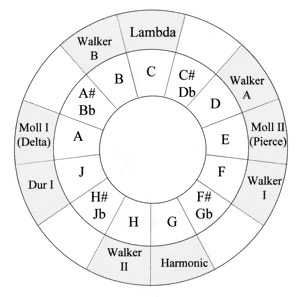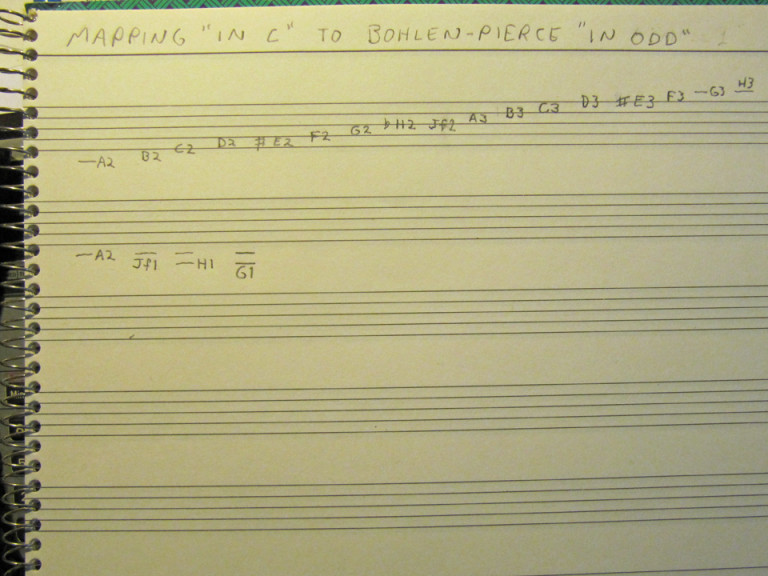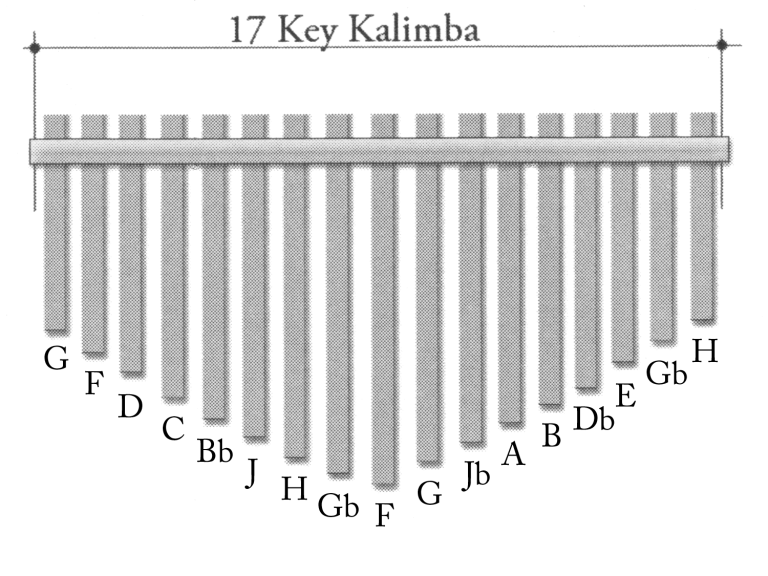This Bohlen-Pierce arrangement of Terry Riley’s “In C” was realized on the musical hardware described in Rehearsal Room. It was performed by 13 identical algorithmic musicians known collectively as The Technical Academy. A characteristic feature of the ensemble is an indiscriminate fader controlled by a Markov chain on each voice. This is the third recording of the completed algorithm.
The notes of Terry Riley’s original score were remapped to Bohlen-Pierce notes in a slightly modified A Moll I mode; the B note would have mapped to BP’s J, but it was changed to Jb simply because Jb sounded better. Riley’s C D E F F# G A Bb B becomes A B C D E F G H Jb. The work is titled “Not In C” because it’s based on this different scale.
Source code written in Ruby can be viewed at github.com/b0blee/TechAcademy.





